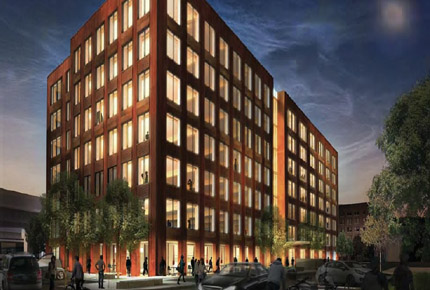LEESBURG, Va. – The International Code Council Ad-hoc Committee on Tall Wood Buildings provided five fire scenarios that were tested in each of the two one-bedroom apartments constructed using mass timber in a multi-story apartment building.
The test scenarios included various arrangements of exposed and unexposed cross-laminated timber (CLT) with open doors between living and sleeping areas while the effectiveness of automatic sprinkler systems was simultaneously evaluated.
Test 1: a mass timber structure fully protected with gypsum wall board was subjected to a large furnishings and contents fire. The test was terminated after three hours without significant charring on the protected wood surfaces of the structure.
|
ARTICLE
New opportunities are opening in the woodworking market with the rising popularity of large-scale wood structures.
|

|
Test 3: parallel CLT walls were left exposed, one in the living room and one in the bedroom. Similar to Test 2, once the apartment furnishings and contents had been consumed by the fire, during which a protective surface of char formed on the CLT, the mass timber surfaces essentially self-extinguished).
Test 4 and 5: examined the effects of sprinkler protection. For both tests, all mass timber surfaces in the living room and bedroom were left exposed. Test 4 demonstrated that under normal operating conditions, a single sprinkler easily contained the fire. For Test 5, the fire was allowed to grow in the compartment for 23 minutes before water was supplied to the sprinklers which quickly controlled the fire.
“The results of these fire tests will continue to be studied and will help inform code change recommendations from the Ad-hoc Committee later this year,” said Stephen J. DiGiovanni, P.E., Ad-hoc Committee Chair and Fire Protection Engineer for the Clark County (NV) Department of Building and Fire Protection. “These tests are an important part of the extensive research data the Committee has reviewed to validate the performance of tall wood buildings.”
The tests were funded in partnership with the U.S. Forest Service’s Forest Products Laboratory and the American Wood Council, and were conducted at the U.S. Bureau of Alcohol, Tobacco, Firearms and Explosives Fire Research Laboratory. A General Technical Report FPL-GTR-247 on the fire tests will be available from the Forest Products Laboratory in the near future.
The American Wood Council (AWC) is the voice of North American wood products manufacturing, representing over 75 percent of an industry that provides approximately 400,000 men and women in the United States with family-wage jobs. AWC members make products that are essential to everyday life from a renewable resource that absorbs and sequesters carbon. Staff experts develop state-of-the-art engineering data, technology, and standards for wood products to assure their safe and efficient design, as well as provide information on wood design, green building, and environmental regulations. AWC also advocates for balanced government policies that affect wood products. More information can be found here.
Test 2: approximately 30 percent of the CLT ceiling area in the living room and bedroom were left exposed. The test was terminated after four hours, providing additional time to determine if there would be any significant fire contribution from the exposed CLT. Notably, once the furnishings and contents had been consumed by the fire, the exposed CLT essentially self-extinguished due to the formation of char that protected the underlying wood.








Have something to say? Share your thoughts with us in the comments below.